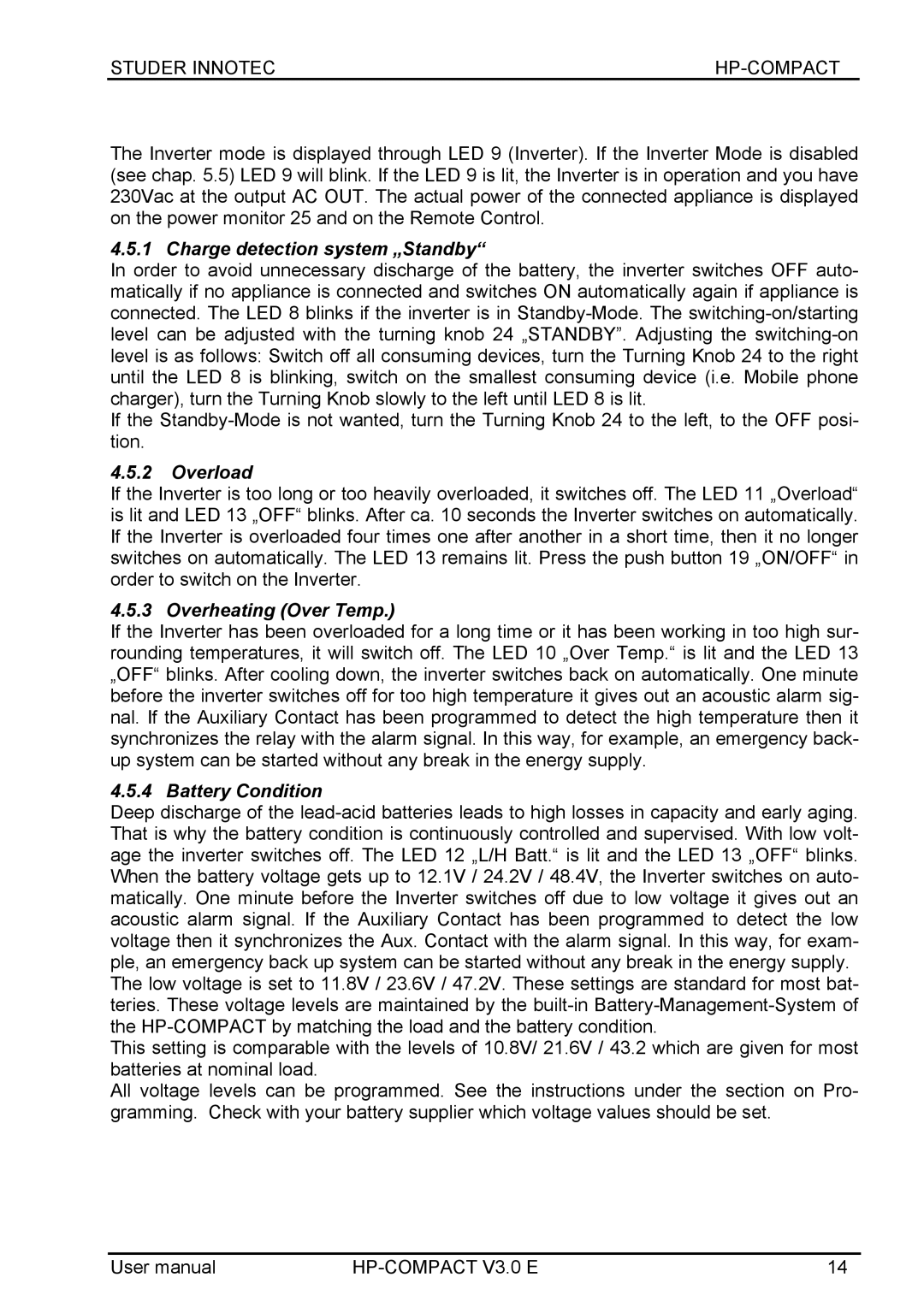STUDER INNOTEC |
The Inverter mode is displayed through LED 9 (Inverter). If the Inverter Mode is disabled (see chap. 5.5) LED 9 will blink. If the LED 9 is lit, the Inverter is in operation and you have 230Vac at the output AC OUT. The actual power of the connected appliance is displayed on the power monitor 25 and on the Remote Control.
4.5.1 Charge detection system „Standby“
In order to avoid unnecessary discharge of the battery, the inverter switches OFF auto- matically if no appliance is connected and switches ON automatically again if appliance is connected. The LED 8 blinks if the inverter is in
If the
4.5.2Overload
If the Inverter is too long or too heavily overloaded, it switches off. The LED 11 „Overload“ is lit and LED 13 „OFF“ blinks. After ca. 10 seconds the Inverter switches on automatically. If the Inverter is overloaded four times one after another in a short time, then it no longer switches on automatically. The LED 13 remains lit. Press the push button 19 „ON/OFF“ in order to switch on the Inverter.
4.5.3 Overheating (Over Temp.)
If the Inverter has been overloaded for a long time or it has been working in too high sur- rounding temperatures, it will switch off. The LED 10 „Over Temp.“ is lit and the LED 13 „OFF“ blinks. After cooling down, the inverter switches back on automatically. One minute before the inverter switches off for too high temperature it gives out an acoustic alarm sig- nal. If the Auxiliary Contact has been programmed to detect the high temperature then it synchronizes the relay with the alarm signal. In this way, for example, an emergency back- up system can be started without any break in the energy supply.
4.5.4 Battery Condition
Deep discharge of the
This setting is comparable with the levels of 10.8V/ 21.6V / 43.2 which are given for most batteries at nominal load.
All voltage levels can be programmed. See the instructions under the section on Pro- gramming. Check with your battery supplier which voltage values should be set.
User manual | 14 |
